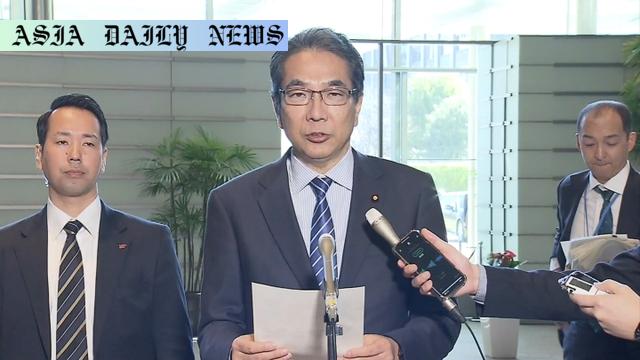Rice Stockpiles: Japan’s agriculture minister announces monthly releases of rice stockpiles and new auction measures to stabilize prices.

Japan’s Monthly Rice Stockpile Releases: A Strategic Move
Japan’s Agriculture Minister Eto Taku has unveiled a decisive plan to alleviate the ongoing surge in rice prices by releasing government stockpiles every month until the summer. This bold initiative aims to tackle supply shortages and ensure price stability for this staple food. With the third auction of 100,000 tons of stockpiled rice scheduled later this month, the ministry hopes to address ongoing concerns amidst rising consumer costs.Speaking to reporters after a meeting with Prime Minister Ishiba Shigeru, Eto confirmed his commitment to fulfilling the government’s directive. As instructed, the Ministry will maintain a consistent rice supply during the seasonal scarcity period leading up to July. This move is anticipated to play a vital role in stabilizing rice prices, which have been climbing steadily over the past three months.
Tackling Price Hikes and the Role of Distributors
Minister Eto also emphasized the importance of collaborating with distributors to ensure affordability for consumers. Over the coming weeks, officials from the agriculture ministry will engage wholesalers and large-scale retailers in discussions aimed at gathering feedback and exchanging ideas. Eto expressed his willingness to implement additional measures if current strategies prove insufficient in mitigating the issue of rising costs.
Despite the release of 210,000 tons of rice in two installments earlier this year, retail prices have continued to climb. The most recent release saw the average price of a 5-kilogram bag of rice at supermarkets across Japan reach 4,206 yen (approximately $28) as of March 30—a level that reflects 13 consecutive weeks of price increases.
Potential Impact on Consumers and Economic Stability
The government’s intervention comes at a critical time as concerns grow over the broader economic implications of rising food prices. By directly addressing shortages and introducing consistent supply mechanisms, the ministry seeks to create longer-term stability in the rice market. This focus on stability is not only fundamental to consumer well-being but also vital for sustaining confidence in the domestic food supply chain.
In addition to stabilizing the market, the initiative is also expected to alleviate fears among lower-income households who have been disproportionately affected by soaring prices. As rice remains a staple food in Japan, ensuring its accessibility is a social and economic priority.
While this strategy demonstrates a proactive approach to price stabilization, its success will depend heavily on the coordinated efforts of distributors, retailers, and policymakers. Furthermore, continued market monitoring will be necessary to ensure that these measures deliver their intended outcomes.
Commentary
The Proactive Stance on Rice Price Stabilization
The Japanese agriculture ministry’s decision to release stockpiled rice every month until summer is a commendable effort to stabilize the country’s rice market. This timely intervention reflects the ministry’s understanding of the essential role that staple foods play in ensuring economic and social stability.By releasing stockpiles strategically and organizing auctions, Minister Eto Taku has demonstrated a clear commitment to addressing an issue that directly affects millions of households. The rising cost of staple foods like rice is not merely a financial burden but a challenge to maintaining an equitable standard of living—particularly for vulnerable populations. Guiding distributors to keep prices affordable while augmenting supplies further reinforces the ministry’s multifaceted approach to this issue.
Addressing Broader Economic Concerns
However, while the intentions behind this initiative are highly commendable, its practical success will depend on several factors. For one, the collaboration between government officials and distributors will be crucial in ensuring that released rice reaches a wide consumer base without unnecessary price markups. Additionally, public perception will play a significant role in determining the ultimate effectiveness of these measures. Clear communication about the availability of rice and information about how supplies are managed will be essential in fostering trust.
The Need for Continued Oversight
Moving forward, the government should consider implementing a comprehensive monitoring framework to evaluate the success of these interventions. Tracking consumer feedback, retail pricing trends, and distribution practices will provide valuable insights for refining future strategies. It’s also worth exploring additional long-term solutions, such as augmenting domestic rice production capacity or revising import policies to create a buffer against future supply chain disruptions.
In conclusion, Japan’s proactive approach to alleviating its rice shortage and addressing price hikes underscores the importance of coordinated action in addressing essential economic issues. By ensuring accessibility and affordability, these efforts can serve as a benchmark for other nations grappling with similar challenges.


